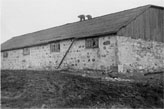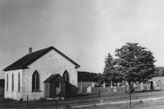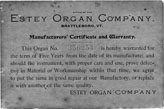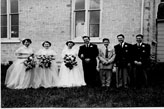Our History
In the early pioneer days of the 1820s and 1830s, the eastern part of Caledon Township was settled by Scots. One of settlers first tasks after providing dwellings was establishing a place of worship. In 1830, several concerned Scottish Presbyterians wrote to the Glasgow Colonial Society requesting a minister. They had no church building, nor even a schoolhouse to meet in, and they could only offer a salary of twenty pounds’ sterling.
Rev. Duncan McMillan answered this call, and arrived in Caledon in 1830. His induction as Minister of Caledon took place in the barn of Archibald Ferguson, whose stone house is still standing north of the present church. A small log building near this barn served as the church. Rev. McMillan stayed with the church until 1839.
The new church was built with local fieldstone. The floor was constructed from boards cut from trees of the surrounding forest, and the crude seats were fashioned by cutting sections of the tree trunks and laying boards across them. Despite the crudeness of the finishing, the church has endured, and served the congregation until 1965.
St. Andrew’s is a classic example of early Protestant church architecture, one of the few such "pioneer" churches remaining in the area. The use of local stone has resulted in it fitting beautifully into the context of gently rolling hills, and neighbouring stone houses.
On the 100th Anniversary of the church, in 1953, some improvements were made to the interior, but very little has changed since it was originally built. The pews are extremely simple and devoid of decoration. Two side aisles lead to a raised platform on which rests the 1906 Estey pump organ, several press-back chairs and a lectern. On the wall behind the lectern is a large gothic frame, which we believed concealed an earlier stencilled decoration. However, when we removed the diagonal strips of wood covering it, we found nothing but plaster.
St. Andrew’s Stone Church was designated by the Town of Caledon as a Heritage Structure in 1983 during its 130th anniversary year, on the recommendation of the Town’s Local Architectural Advisory Committee.




